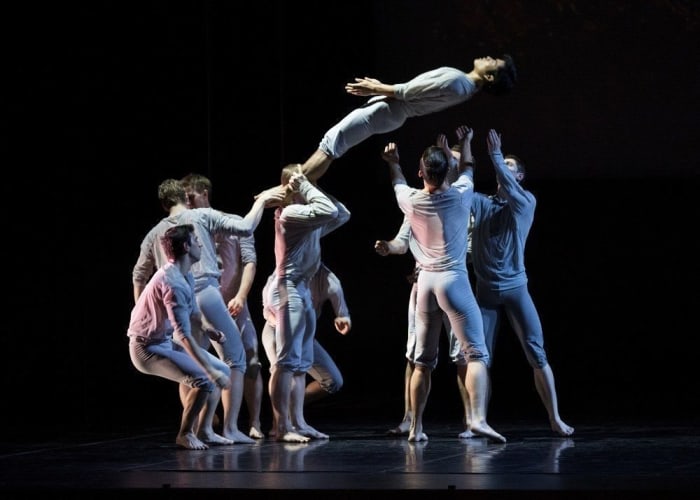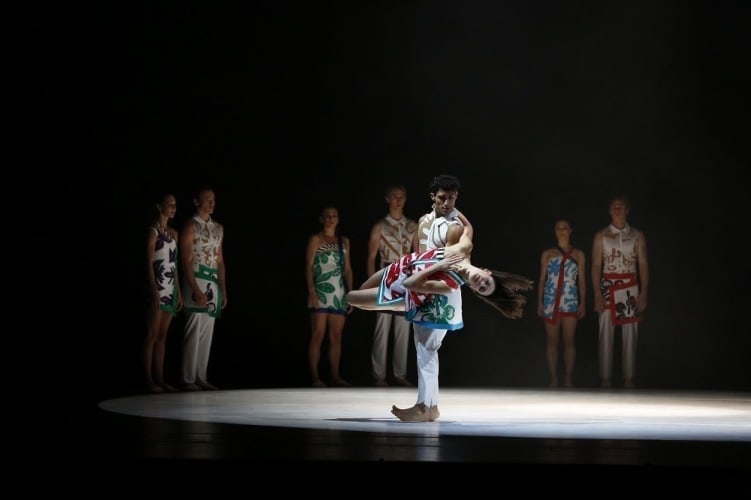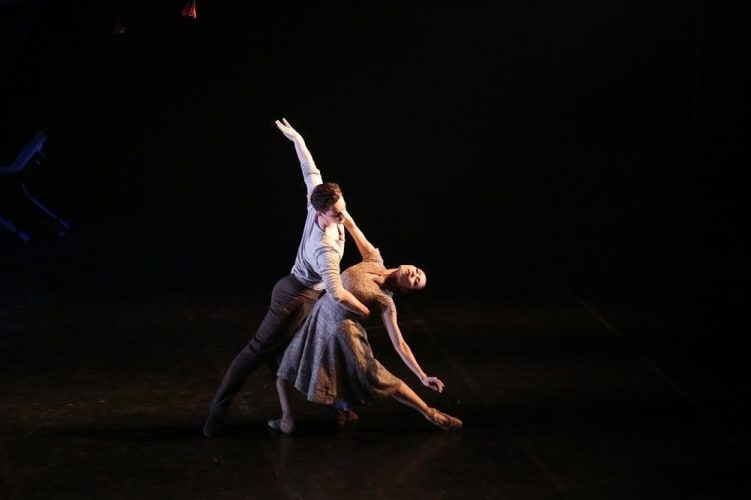As part of its UK tour, Royal New Zealand Ballet presents a mixed programme celebrating New Zealand’s heritage and culture. The four works switch effortlessly between contemporary and classical dance showcasing the versatility of this company as it returns to the UK for the first time in four years.
In Javier de Frutos’s latest work for the company, The Anatomy of a Passing Cloud, the overriding sense is one of joyful celebration. Gathered around the edge of a white circle, the dancers repeatedly cross its space shifting between light springy steps and deep pliés with apparent ease. A series of trios, passing a girl between two men, add a flirtatious edge to its light-hearted movement.
Rather than relate any particular story, Frutos instead conjures up an atmospheric portrayal of Pacific culture through his movement, music and colourful, tropical-print costumes. Like its soundtrack of Pasifika songs, the company embraces this work with a warm and spirited performance.
The middle of the bill takes a more sombre note. Two works, first performed by the company to commemorate the centenary of the Gallipoli landings, reflect on the divided experience of war: the men who fought and the women who loved them.
Andrew Simmon’s Dear Horizon conveys the loneliness of war with a grace and feeling easy to understand. The men dance together in an image of comradeship; the women are figures that join them then disappear, like passing memories.
This is the only work in the bill where the female dancers are en pointe and it gives their movement a delicacy suited to the picturesque images Dear Horizon presents—even if these images are, at times, a little obvious. Towards the end, the female dancers enter, their faces covered by scarves. As they lay their hands on their male partners' shoulders the image is striking enough alone; their covered faces only make it feel overworked.
Passchendaele is a short and simply staged work, but of the two it leaves the greater impact. The male dancers rush onto the stage in a powerful burst of movement, then one by one they fall. The women enter in mournful lines, hands joined, their slow, lyrical work a contrast to the high-energy choreography of the men at war.
In a poignant image, couples meet in a short embrace before parting, perhaps forever. Neil Ieremia’s Passchendaele highlights the sacrifices made by both men and women, commemorating those lost and the pain of those left behind.
The programme ends in a riot of movement. Bodies fly around the space, dancers run on and off stage, solos, partnering and unison occur simultaneously. It’s hard to know where to look in Andonis Foniadakis’s Selon desir.
Dressed alike in loose, bright coloured skirts and tops, the company attacks Foniadakis’s weightier, released style with assurance and relentless energy. There’s a great freedom in their movement as they drop in and out of the floor, the loose hair of the female dancers flying around their bodies.
Set to Bach’s choral music, the St Matthew and St John Passions, Selon desir embraces the drama of its music but does little to progress its ideas and images. However the company commits to the work full-heartedly, delivering Foniadakis’s mad rush of choreography with due abandon.
Royal New Zealand Ballet presents an enjoyable bill and, although it features no truly remarkable pieces, the company dances with an enthusiasm and energy that fills each work with life.


